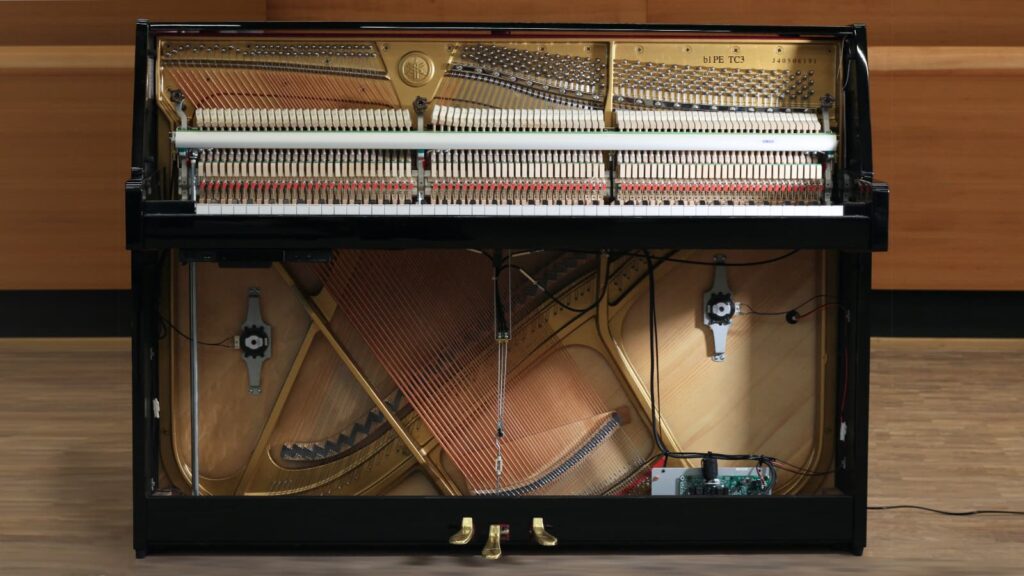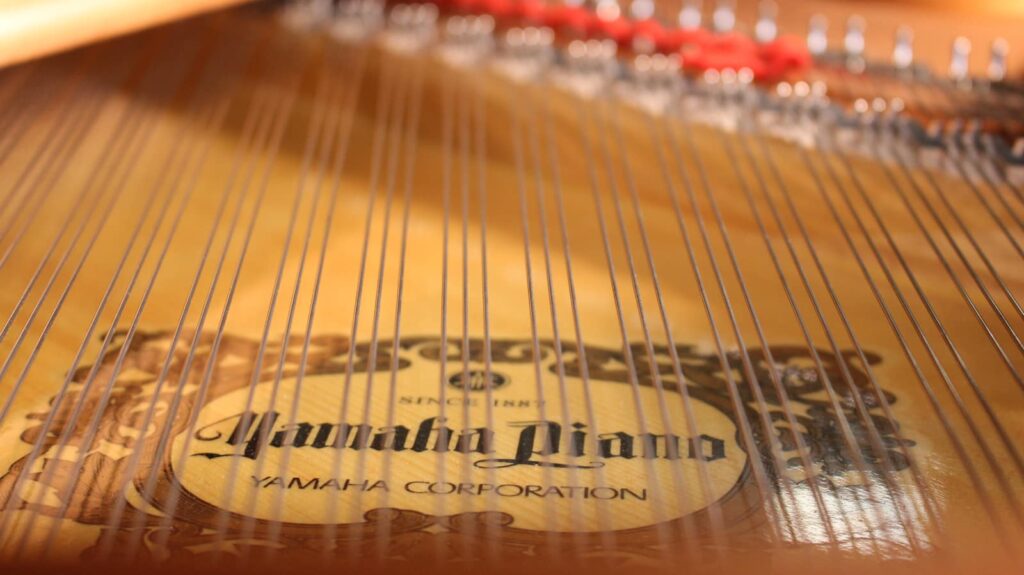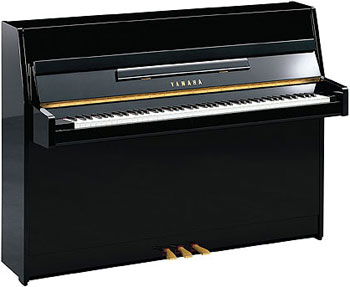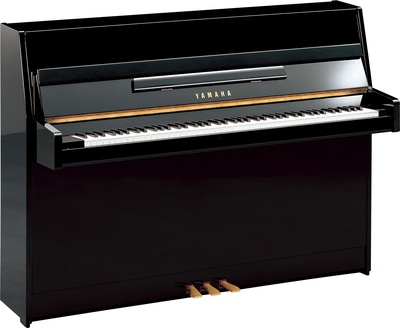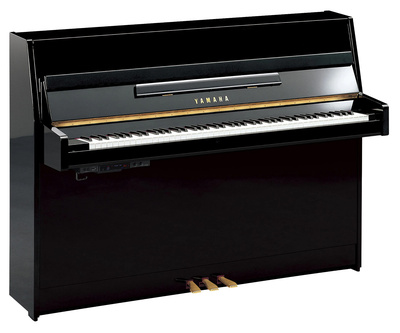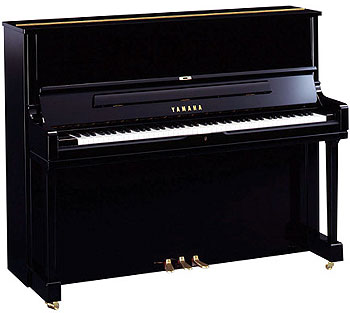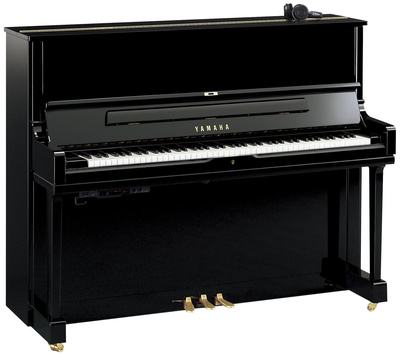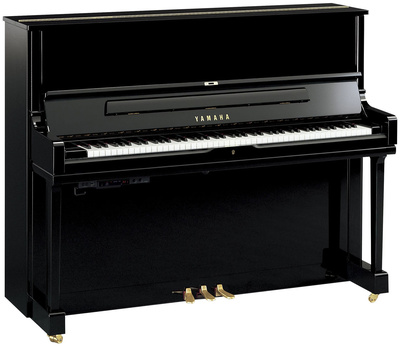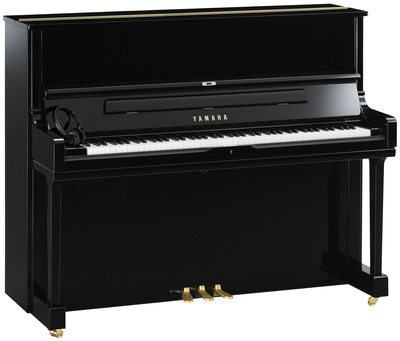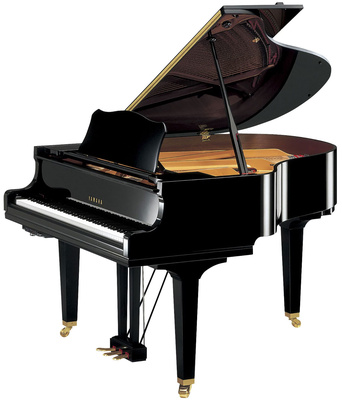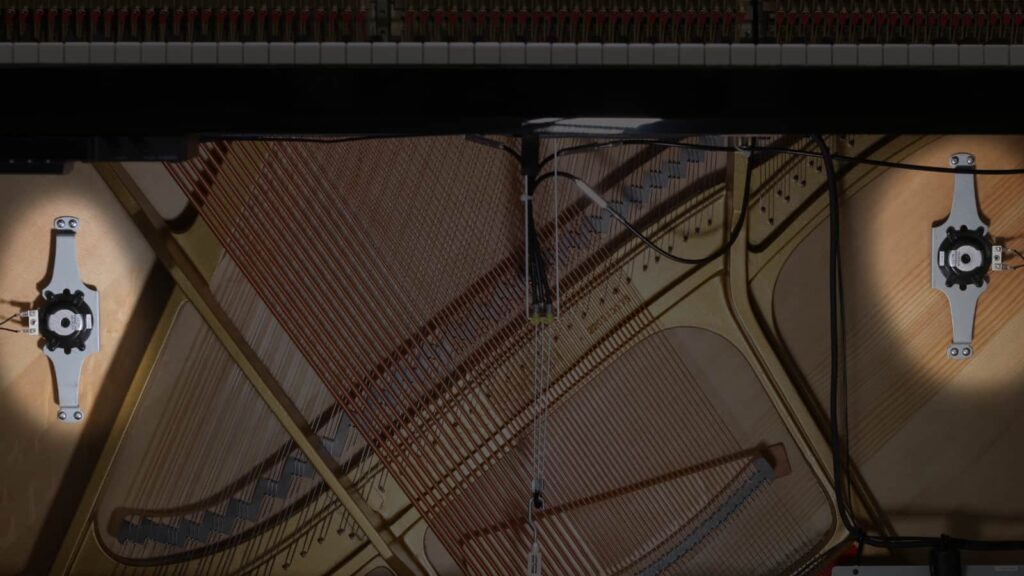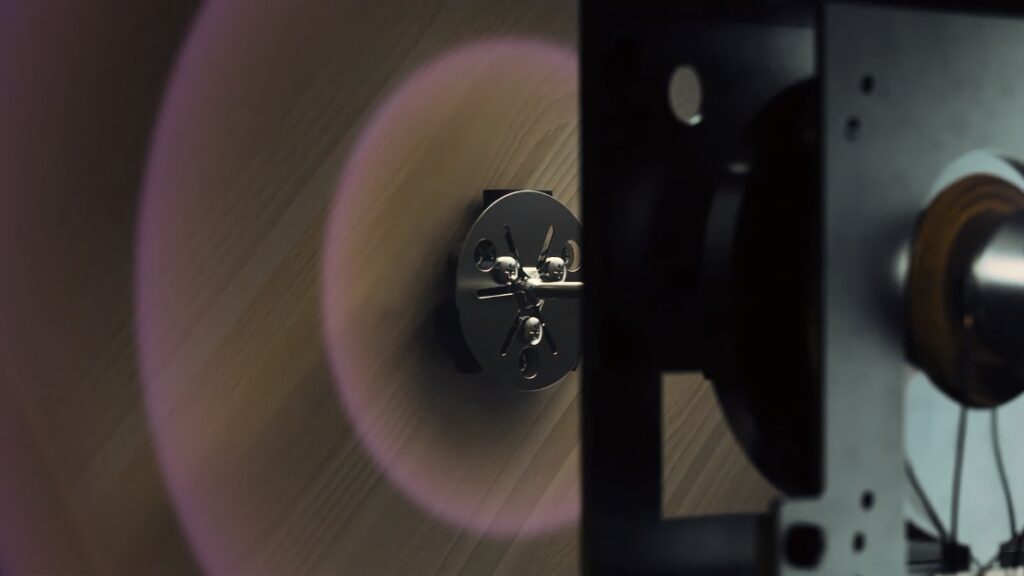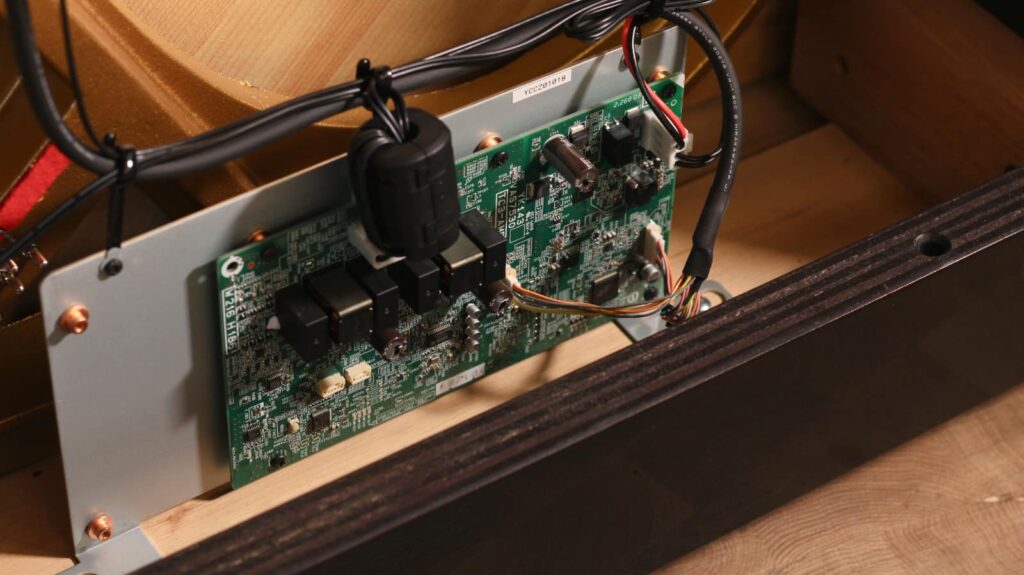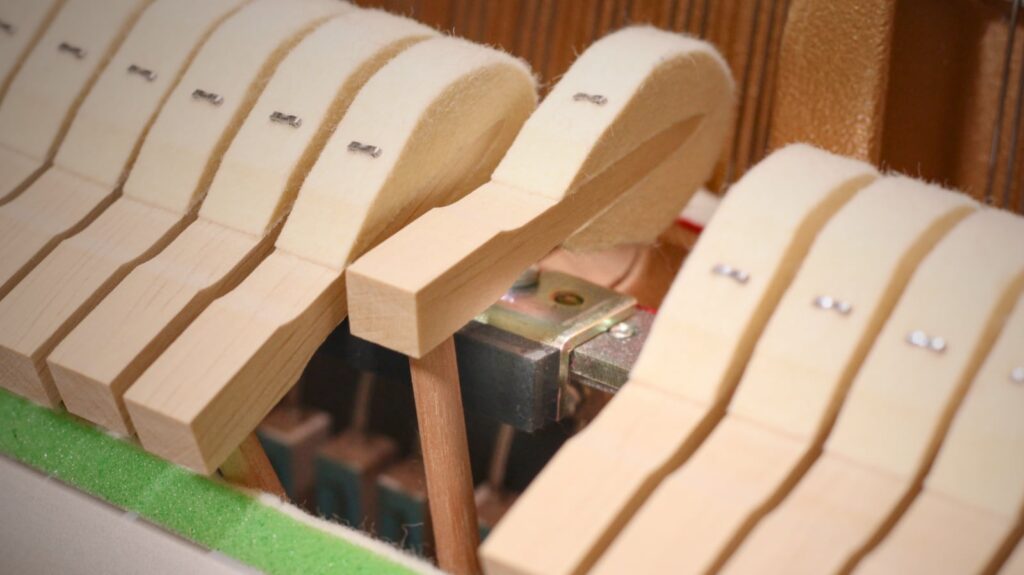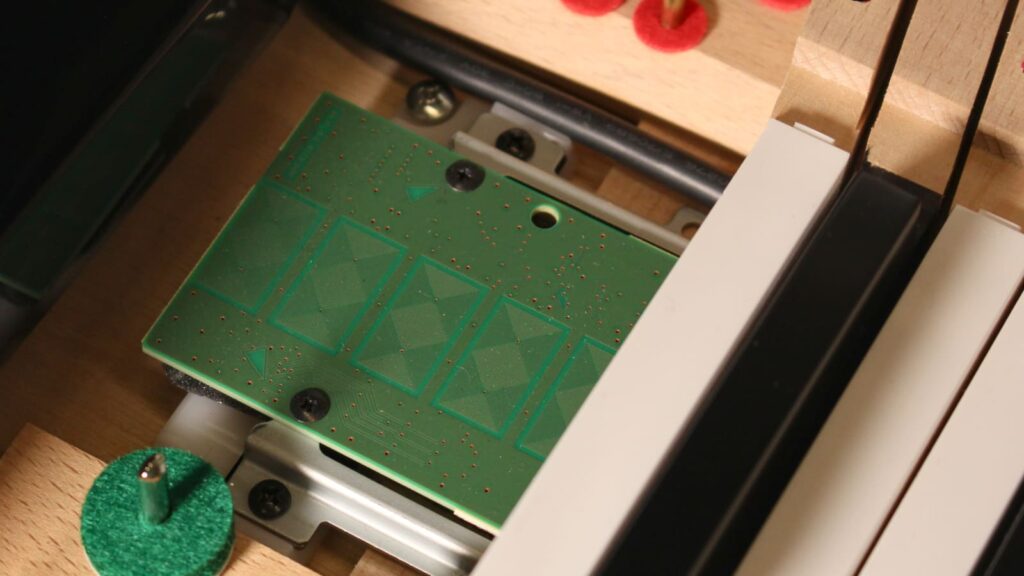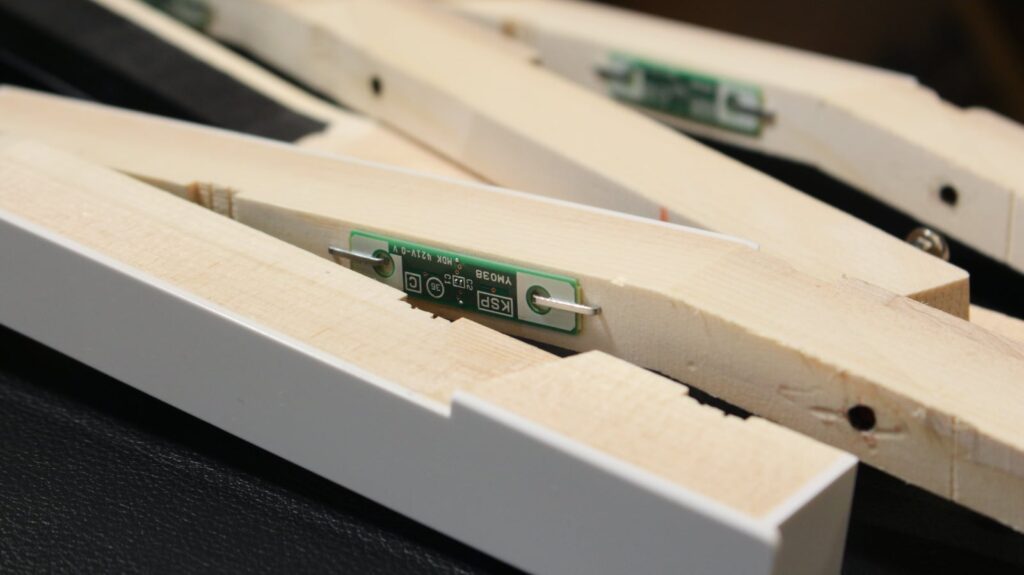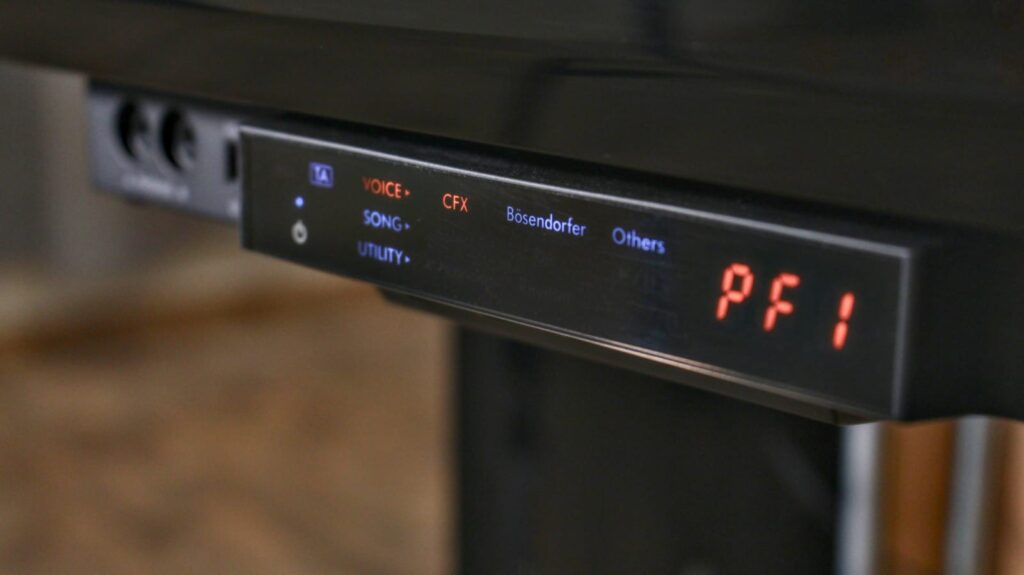Digital Sounds
The Yamaha TransAcoustic Pianos offer two grand piano sounds – CFX and Bösendorfer – and thus two very strong sonic ideals. The CFX plays brilliantly and brightly, and while the Bösendorfer has an overall softer response, it still sounds powerful and transparent. A great playing and listening experience in every respect.
Binaural sampling was used for the CFX and Bösendorfer, which is noticeable when you play them on headphones. Stereo sounds recorded without the use of binaural technology complete the comprehensive sound selection. These include an upright piano as well as digital piano classics such as harpsichord, digital piano, strings & more. The quality of the additional sounds is quite good, but there is a noticeable difference compared to the excellent digital piano sounds.
It is not possible to layer the digital sounds, as is the case with the digital pianos of the Clavinova series. But with a Yamaha TransAcoustic Piano, you can still play two sounds at the same time – acoustically, to be exact. When you play without the mute function, you can hear both the acoustic piano and the digital sound generation at the same time. The soundboard handles this without any distortion.
You can quickly turn the digital sound on and off by pressing the volume button, which makes it much easier to find a good balance. Further, it’s a nice effect to turn on a pad sound while playing the piano, for example, to accompany a chorus.

